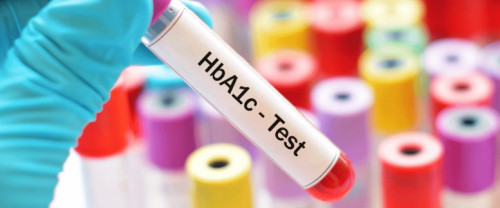The human body needs glucose. Glucose is the fuel that makes the brain work and human muscles move. But without enough insulin to transport glucose into cells, the body will break down fat for fuel instead of glucose, causing ketones to build up and circulate in the bloodstream. If large amounts of ketones build up, blood acidity increase, you have what is called diabetic ketoacidosis, or DKA for short, a medical problem that needs urgent treatment.
Diabetes mellitus (DM) is a chronic disease with an increasing incidence worldwide. DM is a group of metabolic diseases characterized by chronic hyperglycemia due to impaired insulin secretion, insulin action, or both, which reduces the action of insulin on the target tissue, resulting in abnormalities in the metabolism of carbohydrates, fats, and proteins. Based on the cause, DM is grouped into four types, namely DM type-1, DM type-2, DM other types, and diabetes in pregnancy or gestational. Most people with diabetes in children and adolescents are type-1 diabetes mellitus. Children with type-1 DM face short-term complications such as hypoglycemia and diabetic ketoacidosis (KAD), both of which have a risk of morbidity and mortality. Diabetes mellitus (DM) type-1 is a chronic disease that has yet to be cured, but efforts to control metabolic levels properly and optimally can maintain normal development and growth and prevent complications.
According to the American Diabetes Association (ADA), people with type 1 diabetes have lost the ability to produce insulin, so ketones can occur when insulin doses are missed, or when the body's insulin needs increase due to stress or disease. Ketones are a byproduct of fat metabolism, ketones are produced when glucose is not available to body cells as an energy source or when the body cannot use glucose as a fuel source because there is no insulin or not enough insulin. Fat is used as fuel. When fat is metabolized, these by-products called ketones are formed and present in the blood.
If the ketone level in the blood is high, it means that you who have type 1 diabetes are at risk for diabetic ketoacidosis. These can be life-threatening, so it's important to be aware of your ketone levels. High levels of ketones in your blood are a sign that something is not right, you can tell if you have high levels of ketones in your blood by getting them checked. Your doctor will give you an idea of what your target range is and what to do if you go beyond it, monitoring ketone levels is essential when a patient with type 1 diabetes is ill or has consistently high glucose levels. The ADA recommends: When you are sick (when you have a cold or flu for example), have your ketones checked every 4 to 6 hours. And check every 4 to 6 hours if your blood sugar is more than 240 mg/dl and also check ketones if you experience symptoms of KAD.
Early Symptoms :
- Dry mouth and excessive thirst
- Urinating frequently
- High blood glucose
- High levels of ketones
Advanced symptoms :
- Feel tired Nausea, vomiting, or stomach pain
- Hard to breath
Reference:
- Miranda Adelita, Karina Sugih Arto, Melda Deliana, Kontrol Metabolik pada Diabetes Melitus Tipe-CDK-284/ vol. 47 no. 3 th. 2020
- Pulungan AB, Annisa D, Imada S. Diabetes mellitus tipe-1 pada anak: Situasi di Indonesia dan tatalaksana. Sari Pediatri. 2019;6:392-400.
- Darwish HM, Kharroubi AT. Diabetes mellitus: The epidemic of the century. World J Diabetes. 2015;6:850-67.
- Mayer-Davis EJ, Kahkoska AR, Jefferies C, Dabelea D, Balde N, Gong CX, et al. ISPAD clinical practice consensus guidelines 2018: Definition, epidemiology, and classification of diabetes in children and adolescents. Pediatr Diabetes. 2018;19:7-19.
- Ridwan Z, Bahrun U, Pakasi RDN. Ketoacidosis diabetic di diabetes melitus tipe 1. Indones J Clin Pathol Med Laboratory. 2016;2:200-3.
- Tridjaya B, Yati NP, Faizi M, Marzuki AN, Moelyo AG, Soesanti F. Konsensus nasional pengelolaan diabetes melitus tipe 1. 3rd Ed. Jakarta: Badan Penerbit Ikatan Dokter Anak Indonesia; 2015. p. 1-96.
- Endyarni B, Batubara JRL, Boediman I. Effects of structured educational intervention on metabolic control of type-1 diabetes melitus patients. Pediatr Indones. 2006;46:260-5.
- Cooke DW, Platnick L. Type 1 diabetes melitus in pediatrics. Pediatr in Rev. 2008;28:347-85.
- Beck JK, Pharm, Cogen FR. Outpatient management of pediatric type 1 diabetes. J Pediatr Pharmacol. 2015;5:344-57.
- Rahmawati L, Soedjatmiko, Gunardi H, Sekartini R, Batubara JRL, Pulungan AB. Gangguan perilaku pasien diabetes melitus tipe-1 di poliklinik endokrinologi anak Rumah Sakit Cipto Mangunkusumo. Sari Pediatri 2007;4:264-9 https://labtestsonline.org/understanding/analytes/blood-ketones/tab/sample.







